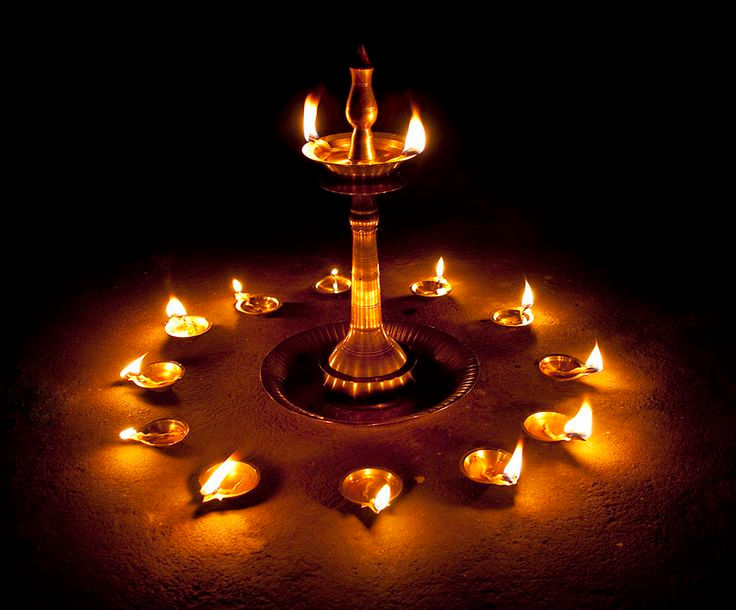Symbolism: Holi, Beyond Colors
- Sidharth Kaw
- Mar 18, 2022
- 3 min read
Updated: Mar 4, 2024

The absolutely vibrant experience of being smothered in a variety of colored powder is a sight to behold and a feeling worth holding on to. It is the common image associated with Holi, a day most people know as the "festival of colors." But Holi has meaning, deep meaning that incorporates Lord Krishna and one of Vishnu's most ardent devotees. Even the colors at popular Holi celebrations have a deep significance.
Holi celebrations vary by region but generally last two days. On both the Purnimanta and Amanta lunar calendars, Holika Dhahan (also referred to as Jalanewali Holi or Chhoti Holi) falls on the full moon (Poornima) day of the bright fortnight (shukla paksha) of the month Phalgun. In South India, Holika Dahan is referred to Kama Dahanam.
The very next day is referred to as what is popularly referred to as Holi, also referred to as Rangwali Holi - where people celebrate and play with colored powder and water. Rangwali Holi is also referred to as Dhulandi or Dhulendi, among other pronunciations.
On the first day (Holika Dhahan), bonfires are prepared and lit after sunrise (generally speaking - see full rules at the bottom of this article) at the appropriate muhurat (auspicious time). The second day, on Holi, people play with dry powder (gulal) and wet colors.
As for the origins of Holi, the following two stories (i.e. Radha - Krishna and Prahlad - Holika) are the most popular.
Radha and Krishna
Lord Krishna is well known as a mischievous boy who always played pranks on his friends and family. Because of the love they shared, he reserved most of his playful teasing with Radha. One day, Krishna curiously asked his mother Yashoda why he was so dark-skinned, whereas Radha and her friends were all fair-skinned. In jest, Yashoda told him if he threw different colors on Radha's face, he could change it to whatever color he desired. Krishna being Krishna, he took this suggestion to heart and thus began a tradition of throwing color on Holi.
The beauty in this story, especially with discrimination and bigotry being such an important problem, is that we revere Lord Krishna in the highest regard. He is Vishnu's most recent avatar and represents the knowledge in Sanatana Dharma's most popular book, the Shrimad Bhagavad Gita. Yet in the most human way an innocent child would ask such a question, his solution to exemplify our common nature and equality is to turn a seeming difference into a fun expression of love.
Regions of Bharat associated to the life of Lord Krishna, which also happens to be around the Braj region, celebrate Holi with much fervor. These areas include Mathura, Vrindavan, Gowardhan, Gokul, Nandagaon and Barsana.
Prahlad and Holika
According to our Puranas (ancient stories), there once lived a strong-headed king named Hiranyakashipu, who believed he was all-powerful. His pride was so immense that he forbade anyone from worshipping God and forced them to worship him.
However, Hiranyakashipu's own son Prahlad would break this rule on a daily basis by praying to Lord Vishnu. This angered King Hiranyakashipu to the point that he tried to hurt and kill Prahlad but failed at each try. Growing with frustration, he turned to his sister Holika, who had the power to prevent herself from being harmed or burned by agni (fire). Her idea was to take Prahlad into a large fire and burn him to death. Lord Vishnu heard Prahlad's prayers and ensured that Prahlad would not burn. Instead, he reversed Holika's powers so that she burned.
This ancient story is a reminder that prayer and devotion can be more powerful than any mystical powers, especially when done with true faith. Surrendering oneself to higher ideals always triumphs over a life path taken through greed and selfishness.
Please note the following rules about the timing of Holika Dhahan according to Drikpanchang.com :
Holika Dahan Muhurta is decided based on following rules: The first preference to get Holika Dahan Muhurta is during Pradosh while Purnimasi Tithi is prevailing and Bhadra is over. If Bhadra prevails during Pradosh but it ends before midnight then Holika Dahan should be done after Bhadra is over.
If Bhadra is getting over after midnight then only Holika Dahan should be done in Bhadra and preferably during Bhadra Punchha. However one should avoid Bhadra Mukha and in no condition Holika Dahan should be done in Bhadra Mukha. Doing so brings bad luck for the whole year not only for individuals but for whole city and country. Many times Bhadra Punchha is not available between Pradosh and midnight. In such situations one should do Holika Dahan during Pradosh. In rare occasions when neither Pradosh nor Bhadra Punchha is available then one should do Holika Dahan after Pradosh.




